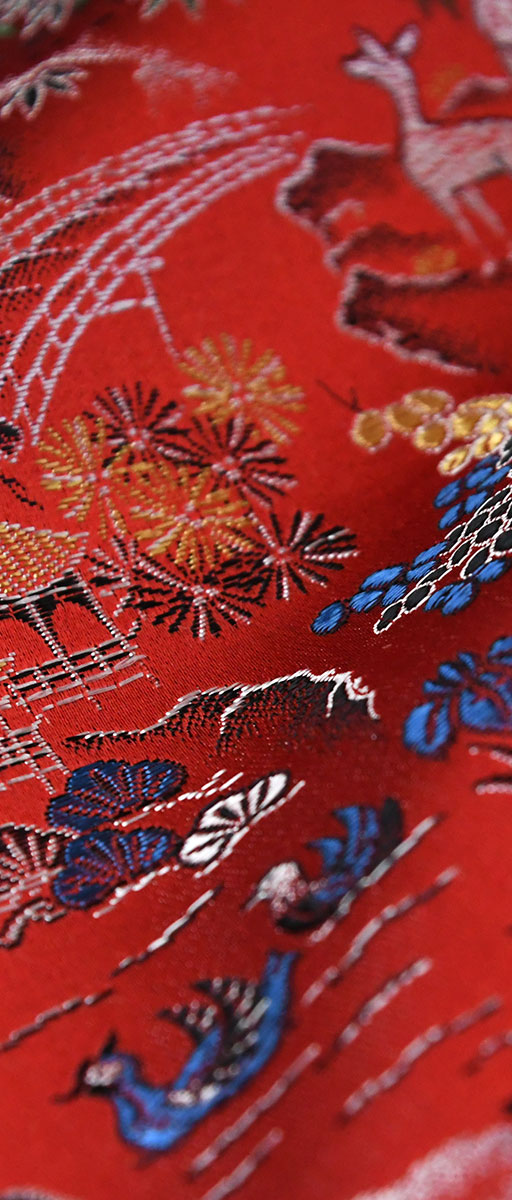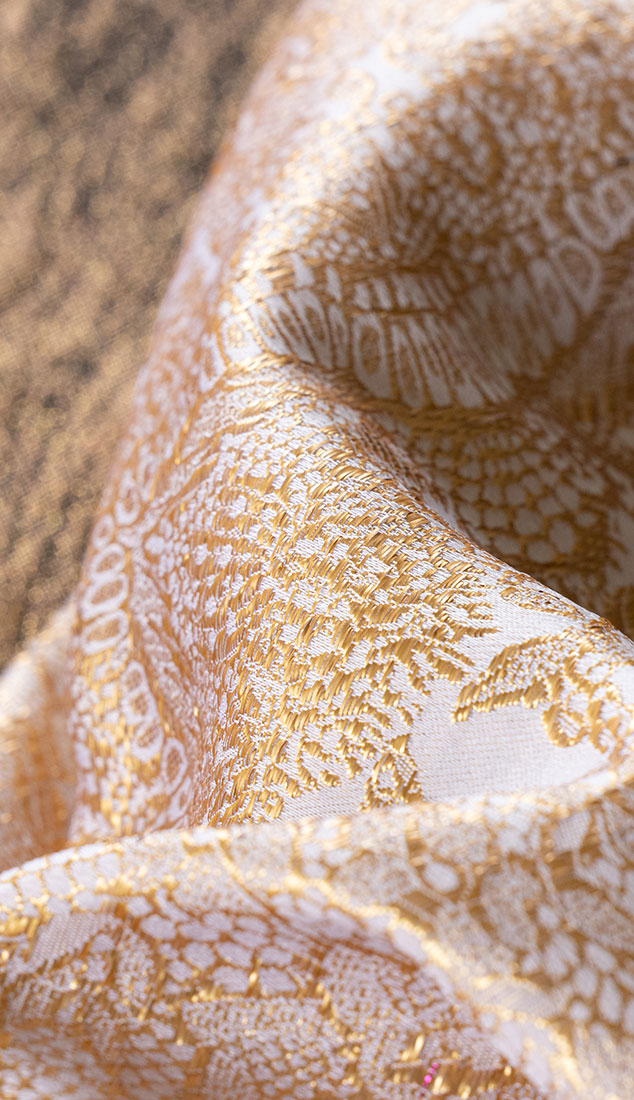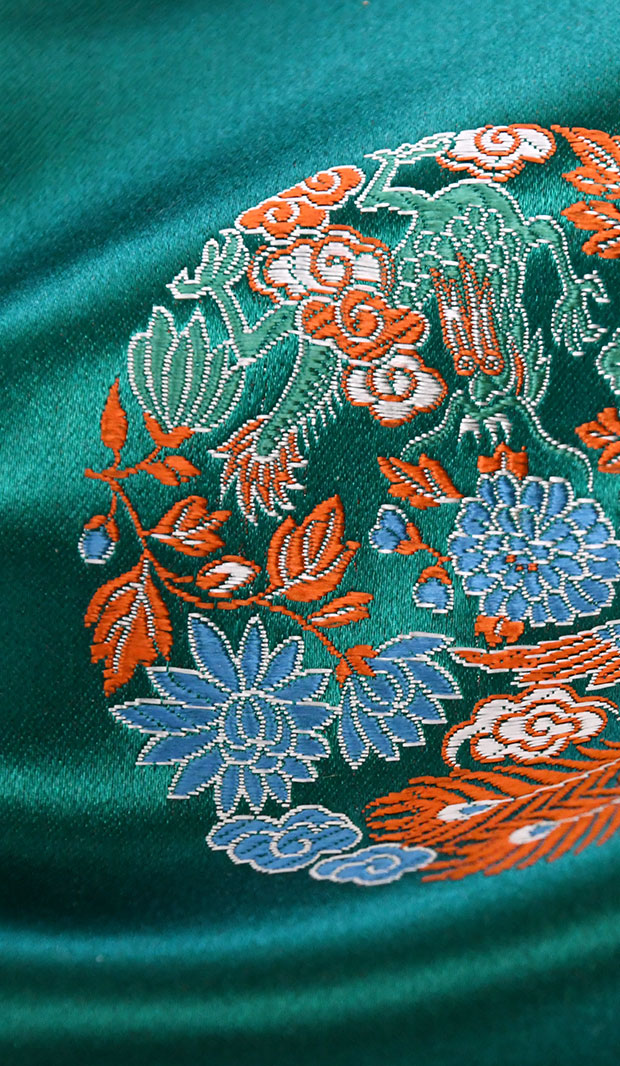Coming out from Tago’s nestle cobe,
I gaze :
white, pure white
the snow has fallen
on Fuji’s lofty peak
Yamabe no Akahito
Hideo Levy 2004
©︎ Hideo Levy 2004
As depicted by this poet, the fallen snow on Mount Fuji likely melted and became groundwater and, much like today, became spring water that enriched the surrounding villages, even over a thousand years ago.
In Yamanashi, textiles have been woven using this pure spring water from Mt.Fuji’s melted snowcap since such ancient times, and this technology has been passed down across the generations to this day.
From the many factories encircled by mountains even today come a multitude of diverse textiles that seem to blur the line between work of art and industrial product.
As the times shift rapidly, and while the types of textiles woven also evolve, the people of Yamanashi continue to guard their lifestyles interwoven with their weaving tradition, in this place surrounded by beautiful nature.
The image of these people, who have inherited this weaving technology and lifestyle and are attempting to pass it on to the future, bring to mind the notion of a loom, where new weft yarns are being woven daily into the warp of a long weaving history.
So, please enjoy these beautiful textiles produced by skillful master craftsmen who have inherited the essence of traditional kimono and silk fabrics and have instilled it into modern-day textiles for today’s fashion and interiors.






